|
I’m not sure when I first realised that if a man with a serious look on his face is seen silently carrying an overlong attaché case in a movie, then he’s probably a professional hitman. Unless you’re new to crime movies, what tends to happen next should have a familiar ring. The hitman will arrive at the location from which he plans to take his lethal shot, usually a position that will give him the advantage of height and distance. Once there,
the case will be opened to reveal a specially cut cloth-lined inset, nestled within which will be a high-powered rifle and a telescopic sight that the assassin may or may not have to assemble before use. Rarely will he show even a flicker of emotion.
And so begins the 1973 Italian crime thriller The Boss [Il boss], as Mafia hitman Nick Lanzetta (Henry Silva) surreptitiously enters the service door of an anonymous concrete building in the Italian city of Palermo by night carrying just such a signature case. Once inside, he silently makes his way to the roof via a service elevator and down into the neighbouring property, inside which several men are gathering in a private cinema to watch a Scandinavian porn movie. Led by a the boisterous Don Antonino Attardi (Andrea Aureli), they are encouraged to have a good time by Antonio’s brother Carlo (Gianni Musy), who elects not to stay for the film itself, being closely followed out by the bodyguards ordered from the room by Antonio. While all this is unfolding, Lanzetta enters the projection booth above and knocks the scraggly human skeleton of a projectionist (Fernando Cerulli) out cold. He then opens his case, takes out a scoped rifle and takes aim through the small window used by the projectionist to monitor the film. Which one of the men in the audience is he aiming to shoot? The smart money is on Antonio, but wait just a minute, what’s that he’s slotted onto the end of the rifle barrel? Bloody hell, is that a projectile grenade? You’d better believe it. When Lanzetta fires his shot, he doesn’t so much hit Antonio destroy the screening room, which explodes into a sea of roaring flames. This doesn’t stop Lanzetta from unloading another three grenades into the inferno, just to make sure. Yeah, I think they’re all dead now, chum.
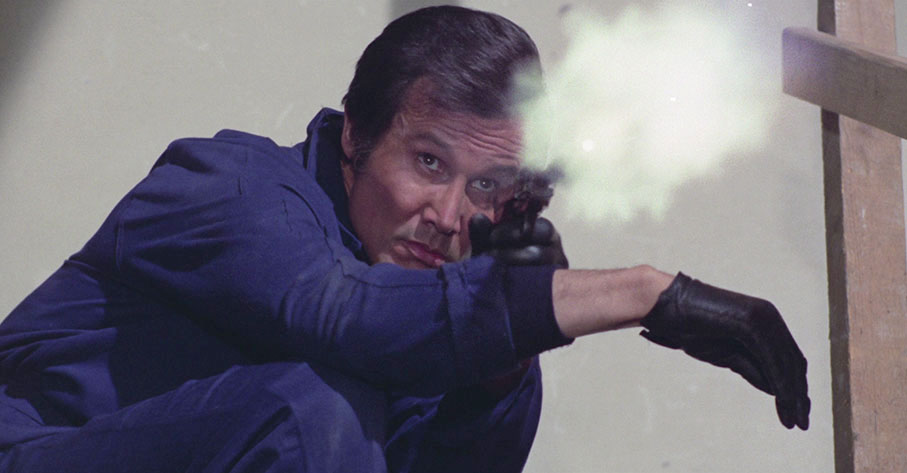
Lanzetta then exits the projection room and takes position on the nearby stairwell, and when screening organiser Sacco (Salvatore Billa) runs up the corridor, Lanzetta launches a grenade into his chest and blows him to smithereens, then takes out the two armed bodyguards with a silenced pistol. At no point does he break a sweat or show the slightest sign of concern. Clearly, this man is dangerously good at his job. As the opening titles play out, he drives to a mob warehouse run by his good friend Pignataro (Marino Masé), where he puts in a call to mob boss Don Giuseppe Daniello (Claudio Nicastro), with whom he leaves a coded message that the job has been successfully completed, news that prompts a gleeful Daniello to express his delight to his second-in-command Maione (Pietro Ceccarelli). Daniello then makes a call to his superior, Don Corrasco (Richard Conte), to pass on the good news, again in coded form, which Corrasco listens to wordlessly before calmly putting down the phone.
The action then switches to the city mortuary, where the mangled bodies of three of the victims are laid out on autopsy slabs while the distraught Carlo weeps hysterically over the remains of his murdered brother. Enter self-important Police Commissioner Torri (Gianni Garko), who quickly ejects a group of wailing female mourners and a press photographer (Claudio Giorgi), and talks directly to Cocchi (Pier Paolo Capponi), the circumstance-promoted new leader of the Calabrian Attardi family. Cocchi curtly reveals that he has been able to identify the bodies of four of his men by offbeat physical characteristics (“Gioia has a mole on his ass, Buscetta had orchitis… he had only one nut”), and is certain that the hit was carried out by Lanzetta. It’s hardly surprising that there’s no love lost between Torri and Cocchi, but it turns out there’s more to Torri’s antipathy than initially meets the eye. After allowing the mourners to return to the morgue and apologising to the press photographer, he nips down the corridor to a payphone to file a report on his conversation with Cocchi, not to his superiors but to rival mob boss Daniello. Hello…
In the blink of an edit, the mood instantly changes, as two young university students – one male, one female – walk cheerily arm-in-arm through the streets of Palermo serenaded by a score that just oozes happy contentment. As they enter a park, two young men kicking a football around playfully toss the ball to the young woman, and she and her boyfriend instantly join in the fun. It’s the absolute picture of late 1960s youthful freedom and fun. Seconds later, however, it’s brought quickly and jarringly to a halt when one of men kicks the boyfriend sharply in the balls and he and his companion grab the girl, stuff her into a waiting car and speed away. It’s quickly revealed that the girl is Daniello’s daughter Rina (Antonia Santilli) and the men who kidnapped her are working for Cocchi, the plan being to exchange her for Daniello himself, whom they blame for ordering the murder of their Don.
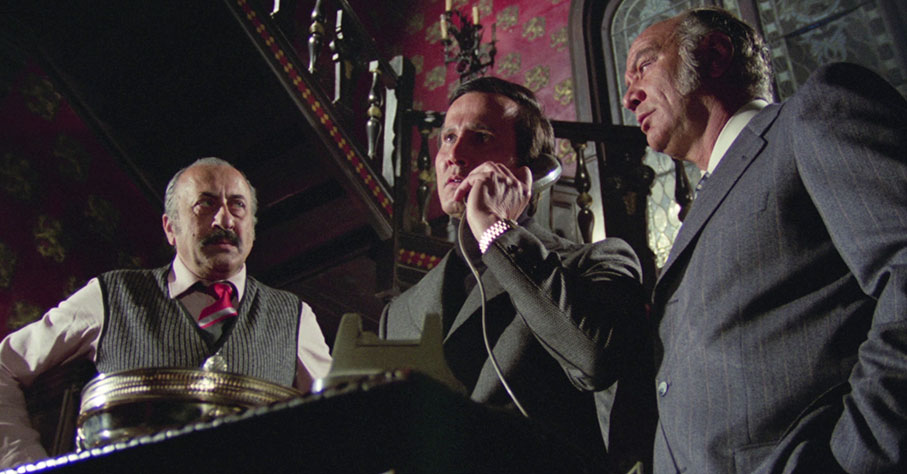
A distraught Daniello tells Don Corrasco that he’s willing to surrender himself to Cocchi to save his daughter, but Corrasco forbids it on the basis that he would be tortured for information that could be used against the family before being killed. When asked by the Don for advice, Lanzetta suggests putting out a story that Daniello suffered a heart attack on hearing the news and has been confined to hospital, and that they offer Cocchi and his boys a substantial cash ransom as a delaying tactic while he searches for Rina. An increasingly frantic Daniello assures his Don that he’s willing to pay whatever the kidnappers ask, but Corrasco has no intention of handing over any money, as this would open the family up to further potential blackmail. He insists they go with Lanzetta’s plan, and privately asks Lanzetta to keep a close eye on Daniello and to step in if he tries negotiating with Cocchi. Yet once they’re back at home base, that’s exactly what Daniello and Maione propose that they do. To secure Lanzetta’s cooperation, Daniello reminds him of everything he has done for him since taking him in 15 years ago and how highly he now regards him, to which Lanzetta responds in all sincerity, “Don Giuseppe, you’ve made me what I am today.” Despite the risk of going against the express orders of their Don, the three thus begin negotiations with Cocchi’s gang in the hope of secretly securing Rina’s release.
Adapted from the novel Mafioso by Peter McCurtin, with the action transposed from New York to Palermo, The Boss [Il Boss] was the third film in what became known as the Milieu Trilogy by writer-director Fernando Di Leo, which began in 1972 with Caliber 9 [Milano calibro 9] and The Italian Connection [La mala ordina]. If you’ve seen either of those films (The Italian Connection is coming to Raro Video Blu-ray in August) you’ll already be aware of Di Leo’s mastery of the Italian crime thriller, and for my money The Boss is absolutely their equal. The stamp of quality is there from the arresting and impressively economic opening scenes, which as well as being compellingly shot and edited, establish the hierarchy of the Corrasco family and its violent rivalry with the Attardi family without once verbally identifying anyone as a Mafioso. That said, in a post-Godfather world, there can be few who do not realise what it means when the head of a criminal organisation is referred to as Don by his subordinates.
The casting is crucial here, with Henry Silva a perfect fit for Lazetta, his chiselled features, laser stare and stoic expression selling the character’s ice-cold professionalism so effectively that his faux-cheeriness in a later café scene comes as something of a jolt. He epitomises why a character doesn’t have to be easily sympathetic to be interesting, as if he’s interesting enough – and Lanzetta most definitely is – then we’ll side with him anyway because we’re tricked into seeing the story through his eyes. Richard Conte’s memorable performance as family boss Barzini in The Godfather quickly saw him offered similar roles in Italian crime dramas* (as far as I’m aware, this was the first of them), and it’s easy to see why. As he ably demonstrated in Coppola’s film, Conte is able to suggest a genuine sense of power and control with the smallest of gestures or the calmly authoritative manner of speech – when Daniello and Lanzetta choose to ignore his orders and try to make a deal with Cocchi, I genuinely feared for the consequences if their Don should find out. Gianni Garko is subtly oily as corrupt Police Commissioner Torri, combatively arrogant when addressing Cocchi at the morgue but subserviently pleased with himself with reporting to Daniello a couple of minutes later, and downright humble in the presence of Don Corrasco. As Torri’s boss, the unnamed Questore (a police commissioner with a higher rank than the one held by Torri), Vittorio Caprioli sometimes plays his frustration to the gallery, but like many characters in the film, is more complicated than he first seems. He’s clearly aware and disapproving of Torri’s Mafia ties, but shrugs this off and even defends the man’s suspiciously inflated bank accounts with a patently false story about a lottery win when questioned on it by Anti-Mafia Squad agent Gabrielli (Mario Pisu). As presumptive Calabrian gang leader Cocchi, Pier Paolo Capponi is like a sinister Italian Henry Magee (an admittedly abstract reference for younger readers), and probably the most genuinely intimidating character in a film peppered with dangerous dudes, while as his right-hand man Melende, Howard Ross has a overly self-confident cockiness that had me quietly itching to see him get a visit from Lanzetta.

As Rina, Antonia Santilli is the only significant female character in the film, and I have to admit that it’s the one that most awkwardly dates it. I’m well aware that women tended to get a raw deal by default in Italian poliziotteschi, and in a reflection of how things were in the real world of the day, mob movies in general tend to be very male dominated – even in The Godfather, Kay and Connie are essentially supporting characters, albeit ones that do have an indirect impact on how the narrative unfolds. While the same is true of Rina, casting her as an alcoholic, drug-addicted nymphomaniac whose Stockholm Syndrome kicks in just minutes after being forcibly paraded in her underwear before Cocchi’s gang is considerably more morally problematic. While there may be a narrative logic to the young gangsters’ plan to rape her while she is in their captivity, the fact that she not only willingly goes along with it but enjoys going to go to bed with two of them at once feels a little like a distorted, middle-aged male wet dream interpretation of the hippie concept of free love. Later (spoiler ahead – skip to the next paragraph to avoid), after she has been rescued by Lanzetta and the two become emotionally and sexually involved, she’s treated just as shabbily, with Lanzetta claiming to be fine with her sticking around just seconds before slapping her and angrily claiming that she’s getting on his nerves.
This moral blip aside, The Boss tells a compelling tale in a consistently riveting fashion, and the key driving force of its success is undoubtably writer-director Fernando Di Leo, whose impeccably structured adaptation of Peter McCurtin’s source novel delivers a crime film that’s as thoughtful as it is tense and exciting. The politics of the organised criminal world, and even the Italian society of the day, are smartly woven into a story of crime family loyalties and rivalries that evolves into one peppered with unexpected twists in which just about everyone seems willing to betray everyone else. It also becomes increasingly hard to be sure exactly who that seemingly straightforward title is referring to. It’s made clear in the special features that Di Leo was a director who brought out the best in his actors, but in what was clearly a close collaboration with cinematographer Franco Villa and editor Amedeo Giomini (both of who he also worked with on Calibre 9 and The Italian Connection), he also demonstrates with aplomb that he was a master of action and visual storytelling too. You’ll find evidence of this aplenty throughout, not least in the kidnap scene when Rina is bundled hastily into the back seat of her abductors’ car and is restrained by Melende, who amuses himself by planting a quick kiss on her lips, then grabbing a piece of pre-prepared tape to cover her mouth as the camera whip-tilts down to the rear wheel of the car just in time for it to speed out of frame, all of which is captured in a single breathless four-second shot. The entire kidnap sequence, from the kick to the boyfriend’s balls to the wide shot of the car exiting the frame in the distance occupies a mere 18 waste-free seconds of screen time.
It's revealed that all this chaos is the indirect result of the original Mafia bosses being driven north by a government crackdown on organised crime, resulting in a power vacuum that has seen the various remaining clans fighting each other for overall supremacy. Honour and trust are both in short supply, the police and politicians are revealed to be corruptible, and it’s even implied that the Catholic church has underworld connections. The now absent old guard still exercise influence, with weighted suggestions for future courses of action conveyed to Don Corrasco by rotund smiling Lawyer Rizzo (Corrado Gaipa), whose status and perceived neutrality enables him to negotiate with both sides without fear of threat or violence. And that violence, when it comes, is often brutal and merciless, from the various murderous methods employed by Lanzetta and his crew in their attempt to bring Cocchi’s gang down, to the individual who foolishly puts his trust in the opposition and finds himself thrown alive into a furnace and the unpleasant purpose that Cocchi puts a jacknife to. Never gratuitous or unnecessarily lingered on, the impact of these acts comes from the no-nonsense manner in which they are performed and filmed, being deadly business as usual for men whose power is established and maintained by how ruthless they are prepared to be.
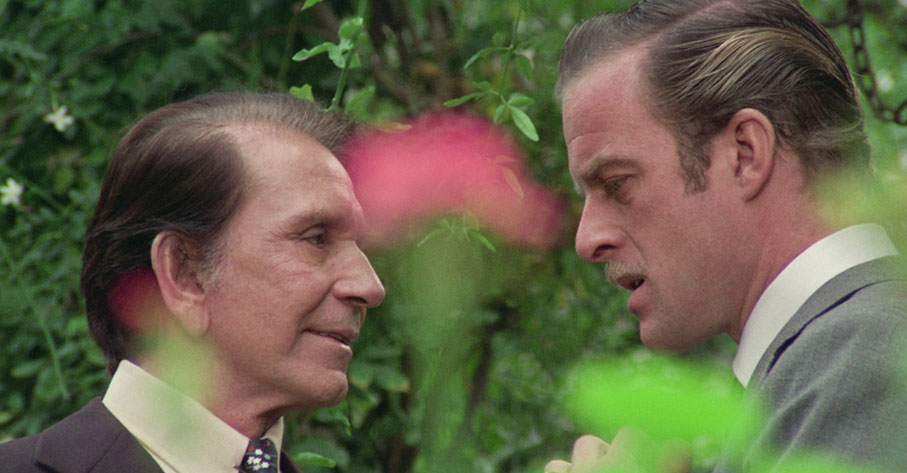
Listening to critic Rachel Nesbit talk so authoritatively about this film in the context of Italian crime movies of the late 1960s and early 70s on the accompanying commentary, I became acutely aware that – critically at least – I’m at a real disadvantage, having come late to this distinctive genre and having seen only a sprinkling of the works for which it is rightly celebrated. Yet just a few films in, I’m completely hooked, and I’d argue that you don’t need to have seen a single poliziotteschi to enjoy and appreciate what makes The Boss such a cracking Mafia-themed crime movie. The casting and performances are spot-on, the violence is sharply staged and believably brutal, the balance between arresting dialogue and pacy action is very well judged, the smartly structured and twist-peppered plot repeatedly wrong-footed me on my first viewing, and the social, political and criminal subtext is dense enough to qualify as educational. It’s a damned fine gateway film into the Italian organised crime subgenre, but with one small but frustrating caveat that it’s best to be aware of in advance of your first viewing. Immediately following the film’s final twist, we’re treated to a green-tinted shot of a character receiving a phone call whose content we never hear, with even the caller’s identity being unconfirmed. As this character nods approvingly, the word “Continua” (“To be continued”) appears on screen, but for reasons that I’ve yet to find a definitive answer to, the promised second half to the story never appeared. Frankly, this is one mother of a shame.
Two versions of the film are included on this Blu-ray, the original Italian language cut and the English language export cut. As ever, both feature post-dubbed tracks, and with an international cast delivering their lines in a mix of the two languages, each is both a good fit and a tad artificial, with the dialogue in sync with some of the actors but slightly off on others. I watched both versions, and while the English language track seemed a better fit for more of the characters – the two American leads included – I tend to prefer the flavour of the translated dialogue on the Italian track, and the dialogue in the two tracks really differs at times. Take the sequence in the morgue when Cocchi identifies four of his men by specific physical characteristics, the last being that Buscetta was missing a testicle due to orchitis, to which Torri responds angrily whilst pointing at his own head. On the English language track he says, “Ah, one ball identified, that’s nice, but not his face. Pity his whole head was shot away!” On the Italian track he says, “You’d be easy to identify. You’ve got orchitis here!” These differences do ultimately change the specifics of how entire dialogue sequences play out, in the process subtly altering the narrative thrust of some aspects of the export version. You pays your money…
Initially, I suspected that this was the only difference between the two versions, but a quick check revealed that the export cut is 19 seconds shorter than the Italian original. Curious, I put both cuts side-by-side on the editing bench and was surprised to find that the material cut from the export version did not contain sex or violence but the tail end of the above-mentioned dialogue exchange between Torri and Cocchi in the morgue. In the export version, the sequence concludes with Cocchi angrily proclaiming that he will get even. In the Italian original, Cocchi goes on to specifically name Lanzetta as the likely assassin, even letting slip a begrudging admiration for how good he is at his job. Why this brief conversational snippet was cut for the export version is beyond me.
Sourced from a 2020 4K restoration of the original negative and framed in its original theatrical ratio of 1.85:1, the 1080p transfer on this Raro Video Blu-ray is once again top-notch. The contrast is robust, displaying deep black levels but clear shadow detail when appropriate and no burn-outs on highlights, and while the colour palette have an earthy leaning in places and sometimes has that slight bluish Eastmancolor hue I tend to associate primarily with films of this period, it otherwise has a largely naturalistic feel, and the rare brighter colours have an attractive vibrancy. Detail is crisply defined, save for a very small number of shots that have a very slight softness to them – when the Questore first meets with Anti-Mafia agent Gabrielli is a prime example. The image is clean of dust and damage and a fine film grain is visible.
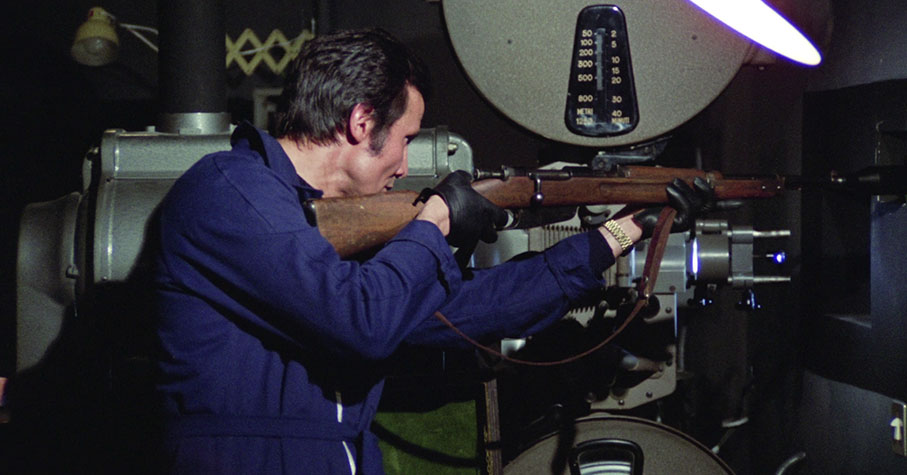
Both the Italian and the English soundtracks are presented in DTS-HD Master Audio 2.0 mono, and despite some unsurprising restrictions in tonal range, they are otherwise clear and free of background hiss or fluff. Some louder elements of Luis Bacalov’s expressive score can be a tad abrasive if you have the volume cranked up high, but that’s not uncommon for mono soundtracks of the period. And come on, have some consideration for your neighbours.
Optional English translation subtitles kick on by default for the Italian track, and optional English subtitles for the hearing impaired are provided for the English language track. It’s also worth noting that the translation subtitles appear to have been prepared specifically for the British market, as indicated by Torri and Cocchi’s shared contempt for “wanker” university students.
Audio Commentary by Rachel Nisbet
Many commentaries fall into three distinct categories: those that focus primarily on the background of the film and the personnel involved in its production; those that discuss the social, political and historical context in which the film was made and set; and those that analyse the film and deconstruct characters and scenes. This excellent commentary by critic Rachel Nisbet is a rare example of one that devotes equal time and attention to all three, and it makes for consistently compelling and frankly enlightening listening. Early on she describes the film as “the most unapologetically violent film in the Milieu Trilogy,” and compares and contrasts key elements from all three films, in the process digging beneath the surface of this one with an attention to detail that, as someone not as well versed in Italian crime films of the period as I should be and soon intend to be, I found really enlightening. She even knows the make and model of the rifle that Nick uses for the explosive assassination that opens the film. Details are provided on writer-director Fernando Di Leo, producer Armando Novelli and some of the key cast members, comparisons are made to Peter McCurtin’s source novel, factual information is supplied on the Sicilian Mafia and Ndrangheta crime organisations, and the evolution of the portrayal of the Mafia in cinema is explored. This is just a sampling from this essential companion to the film.
Mafia Stories (23:42)
A 2004, SD resolution Italian documentary on the film, constructed around interviews with writer-director Fernando Di Leo, producer Armando Novelli, editor Amedeo Giomini, and actors Gianni Garko (Police Commissioner Torri), Pier Paolo Capponi (Cocchi), Gianni Musy (Carlo Attardi), and Howard Ross (Melende). As you would hope, this proves to be a valuable grab, with the interviewees providing first-hand background information on the production, and the actors recalling their experience of working on the film, which includes info on Antonia Santilli and her nervousness at performing her more embarrassing scenes. The in-film political dig that resulted in pressure to remove a potentially inflammatory line of dialogue, one that named real-world serving politicians with Mafia ties, is also addressed, as is the lawsuit filed against Di Leo by Minister for Parliamentary Relations Giovanni Gioia claiming that one of the characters was based directly on him. “That idiot saw the light of day,” says Di Leo on the fact that the case was a eventually dropped. “I’m calling him an idiot even though he’s dead.”
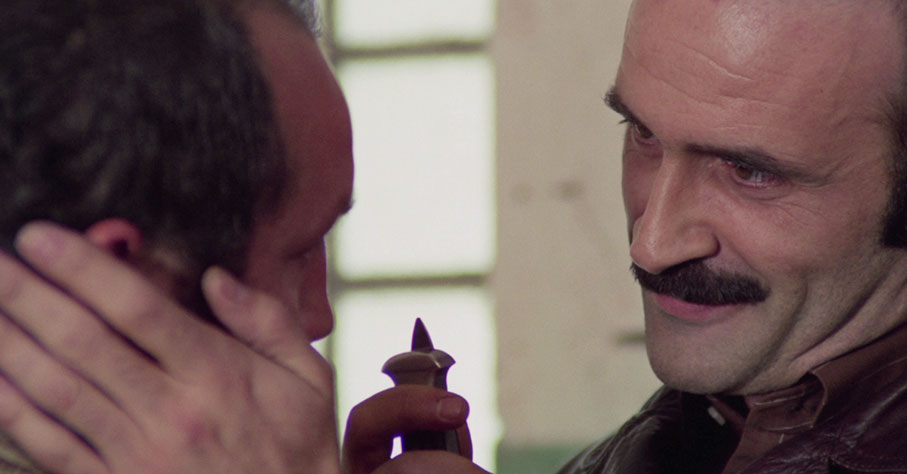
Interview with Fernando Di Leo biographer Davide Pulici (35:00)
Information delivered by the commentary and the Mafia Stories documentary is expanded on by Fernando Di Leo biographer Davide Pulci, who looks for all the world here like an Italian Jonathan Banks, and unsurprisingly really knows his subject. The detail he goes into about the film, its making, its place in the Mafia movie subgenre, the political controversies, writer-director Francesco Di Leo, source novel author Peter McCurtin, and a whole lot more is consistently enthralling. I learned a lot here, though winced a little when Pulici twice described aspects of the film using the exact same words that I had written in my notes and ultimately used in my review. He reveals that it was he who first coined the term “Milieu Trilogy,” and that while Di Leo once believed it was the weakest of the three films, he has since come around to Pulici’s view that’s it’s a substantial work. Indeed, Pulici signs off by assuring us that it’s “among three or four Di Leo films I would take with me to the moon.”
Image Gallery of Promotional Materials
17 screens of posters, promotional photos, lobby cards and press book pages.
Original Theatrical Trailer (3:29)
A lively trailer that opens with seductive extracts from Calibre 9 and The Italian Connection, then races through sometimes misleadingly assembled extracts to sell the film as gunplay-heavy crime thriller where there’s barely a pause in action, in the process delivering a whole string of spoilers. Save this one until after your first viewing of the film.
Also included with the release disc is a Limited Edition Booklet with new writing by Italian crime expert and scholar Giulio Olesen and an archival interview with Di Leo, but this was not available for review.
In case I’ve not been clear enough above, I really liked The Boss, which went up even further in my estimation after I learned more about the socio-political background against which it was made and set. It’s an absolute must for fans of Italian poliziotteschi and a fine entry point for those new to the subgenre. A typically fine restoration and transfer and top-notch extras make this another winner for Raro Video. Highly recommended.
|